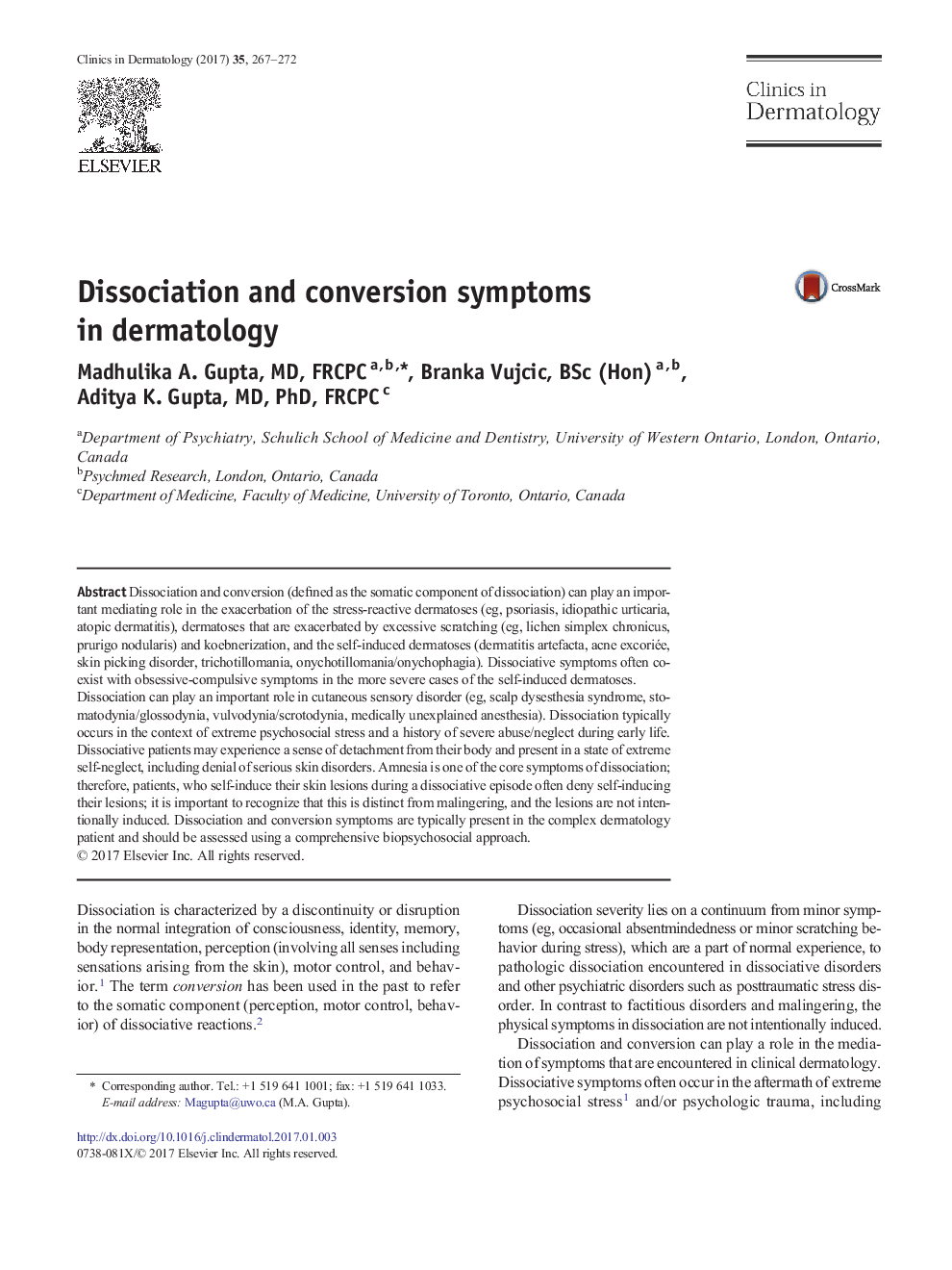| کد مقاله | کد نشریه | سال انتشار | مقاله انگلیسی | نسخه تمام متن |
|---|---|---|---|---|
| 5645698 | 1407033 | 2017 | 6 صفحه PDF | دانلود رایگان |
Dissociation and conversion (defined as the somatic component of dissociation) can play an important mediating role in the exacerbation of the stress-reactive dermatoses (eg, psoriasis, idiopathic urticaria, atopic dermatitis), dermatoses that are exacerbated by excessive scratching (eg, lichen simplex chronicus, prurigo nodularis) and koebnerization, and the self-induced dermatoses (dermatitis artefacta, acne excoriée, skin picking disorder, trichotillomania, onychotillomania/onychophagia). Dissociative symptoms often coexist with obsessive-compulsive symptoms in the more severe cases of the self-induced dermatoses.Dissociation can play an important role in cutaneous sensory disorder (eg, scalp dysesthesia syndrome, stomatodynia/glossodynia, vulvodynia/scrotodynia, medically unexplained anesthesia). Dissociation typically occurs in the context of extreme psychosocial stress and a history of severe abuse/neglect during early life. Dissociative patients may experience a sense of detachment from their body and present in a state of extreme self-neglect, including denial of serious skin disorders. Amnesia is one of the core symptoms of dissociation; therefore, patients, who self-induce their skin lesions during a dissociative episode often deny self-inducing their lesions; it is important to recognize that this is distinct from malingering, and the lesions are not intentionally induced. Dissociation and conversion symptoms are typically present in the complex dermatology patient and should be assessed using a comprehensive biopsychosocial approach.
Journal: Clinics in Dermatology - Volume 35, Issue 3, MayâJune 2017, Pages 267-272
